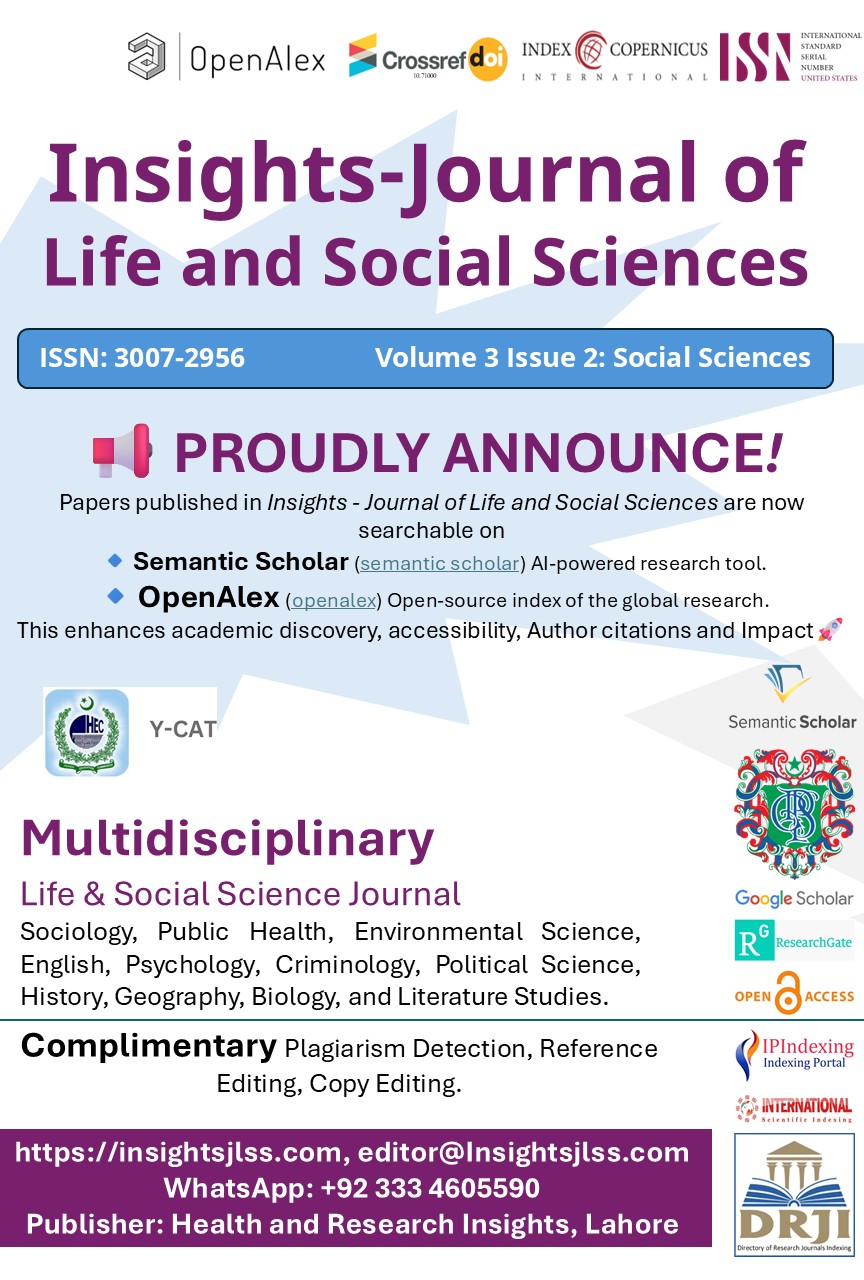COMPARATIVE ANALYSIS OF CULTIVATOR AND DISC HARROW ON FIELD EFFICIENCY, SOIL STRUCTURE, GROWTH AND YIELD OF SUNFLOWER CROP
Main Article Content
Abstract
Background: Efficient soil management is critical for enhancing crop productivity, yet many farmers continue using conventional self-owned tillage tools without understanding their long-term impact on soil structure and crop performance. Sunflower (Helianthus annuus L.) is an economically vital oilseed crop whose optimal growth is highly dependent on soil conditions. Thus, investigating the role of tillage implements in modifying soil structure and influencing sunflower growth and yield parameters is essential to improve sustainable farming practices.
Objective: The present study aimed to comparatively assess the effects of cultivator and disk harrow-based tillage systems on field efficiency, soil structure, growth, and yield performance of sunflower crop under silt loam soil conditions.
Methods: A field experiment was conducted during the Rabi season of 2019–2020 at Latif Experimental Farm, Sindh Agriculture University, Tandojam. Treatments included cultivator two passes (C2), punj hari one pass plus cultivator two passes (P1C2), disk harrow two passes (DH2), and punj hari one pass plus disk harrow two passes (P1DH2). The trial followed a randomized complete block design with three replications. Key soil properties (moisture content, dry bulk density, porosity, mean weight diameter) and growth parameters (seedling emergence, plant height, head diameter, stalk diameter, 1000 seed weight, seed yield) were recorded and statistically analyzed using LSD test at a 5% significance level.
Results: Field efficiency was highest under P1DH2 (74.5%) and lowest under C2 (68.1%). P1C2 treatment exhibited maximum soil moisture content (9.61%), highest porosity (50.94%), and lowest dry bulk density (1.30 g/cm³). Seedling emergence (95.8%), plant height (147 cm), head diameter (47 cm), stalk diameter (5.83 cm), 1000 seed weight (60.20 g), seed moisture content (11.23%), and seed yield (3.55 t/ha) were significantly superior under P1C2. Conversely, DH2 produced the least favorable outcomes across all parameters measured.
Conclusion: The combination of punj hari and two passes of cultivator (P1C2) markedly improved soil structure and enhanced sunflower growth and yield, offering a promising tillage approach for maximizing productivity in silt loam soils.
Article Details

This work is licensed under a Creative Commons Attribution-NonCommercial-NoDerivatives 4.0 International License.
